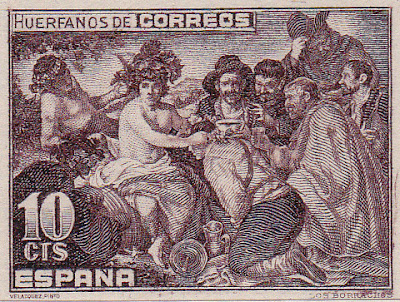Hi everyone! I hope you are all having a wonderful December. It's been a rather mild winter here in California so far. However, others around the world are having a difficult time with the weather.
Our thoughts and prayers go out to all those struggling in the southern Philippines with the recent typhoon. The destruction and loss of life has been enormous. Please help with your donations to charitable organizations assisting those in great need.
To herald the liberation of the Philippines in 1945, the United States Bureau of Engraving and Printing overprinted the Philippines 1937-1940 "Commonwealth" issues with the VICTORY legend.
These official VICTORY overprints followed the provisional, handstamped issues that were created locally in Tacloban, Leyte in 1944.
These officially-overprinted VICTORY stamps were put on sale at various post offices throughout the archipelago, as each were reopened. As a result, there are several "First Day of Issue" cancellations that can be found, for example:
19 January 1945 - Tacloban, Leyte
16 April 1945 - Manila
4 June 1945 - Iloilo
21 July 1945 - Cebu
1 August 1945 - Bacolod
The postcard and cover pictured above were prepared in Tacloban, Leyte, and cancelled on 19 January 1945, the First Day of Issue for these overprinted VICTORY stamps.
The official cachet, in violet ink, reads, "FIRST DAY COVER, FIRST REGULAR VICTORY STAMPS SOLD IN REOPENEND POST OFFICES IN THE LIBERATED PHILIPPINES, JANUARY 19, 1945". This cachet was only used in Tacloban, Leyte.
In my collection, I have several VICTORY First Day Covers from Manila and Cebu, but I do not have examples from Iloilo or Bacolod. If you have VICTORY First Day Covers from these cities, or others, please send me a scan so that I can post them here. If you have spares to trade, I would be interested in possible exchange.
(Reference: Philippine Postage Stamp Handbook, 1854-1982, by Peter W.A. Harradine, 1987, McFarland and Company, Inc. Photos of covers and postage stamps from my collection.)












































